
International Journal of Metalcasting
Scope & Guideline
Advancing the Future of Metalcasting Research
Introduction
Aims and Scopes
- Casting Processes and Techniques:
Research on various casting methodologies, including high-pressure die casting, lost foam casting, squeeze casting, and 3D printing technologies, aimed at enhancing production efficiency and quality. - Material Properties and Performance:
Studies investigating the mechanical, thermal, and corrosion properties of different alloys and composites produced through various casting techniques. - Microstructural Analysis:
In-depth analysis of microstructure evolution in cast metals and alloys, focusing on the effects of processing parameters and alloying elements on the final properties. - Defect Analysis and Prevention:
Research aimed at identifying, analyzing, and mitigating defects in castings, including hot tearing, shrinkage, and porosity. - Sustainable Practices in Casting:
Exploration of eco-friendly materials and methods in the casting industry, including the use of recycled materials and innovative binder systems. - Modeling and Simulation:
Development and application of computational models to predict casting behavior, optimize processes, and enhance understanding of solidification phenomena.
Trending and Emerging
- Additive Manufacturing in Metalcasting:
The incorporation of 3D printing and additive manufacturing techniques in metalcasting is rapidly growing, enabling more complex geometries and reducing material waste. - Advanced Alloys and Composites:
There is a notable increase in research focused on high-performance alloys and metal matrix composites, particularly those designed for specific applications such as aerospace and automotive industries. - Machine Learning and Data Analytics:
The application of machine learning and data analytics in optimizing casting processes and predicting material properties is becoming increasingly prominent, reflecting the industry's move towards Industry 4.0. - Sustainability and Eco-friendly Practices:
Research focused on sustainable casting practices, including the use of recycled materials and environmentally friendly binders, is gaining momentum as the industry prioritizes sustainability. - Real-time Monitoring and Smart Manufacturing:
The integration of real-time monitoring technologies and smart manufacturing practices in casting processes is trending, aimed at enhancing quality control and process efficiency. - Microstructural Engineering:
A growing emphasis on the engineering of microstructures to enhance mechanical properties and performance in cast materials is evident, showcasing advanced techniques such as electromagnetic stirring and ultrasonic treatment.
Declining or Waning
- Traditional Casting Methods:
There is a noticeable reduction in research focused on conventional casting methods, such as sand casting and gravity die casting, as newer technologies gain traction. - General Alloy Studies without Specific Applications:
Papers that explore alloy properties without a clear application or relevance to current industrial practices are becoming less common, as there is a strong push for research that directly addresses practical challenges. - Basic Metallurgical Studies:
Research that primarily focuses on fundamental metallurgical principles, without application to casting processes or materials, is declining in favor of studies that integrate theory with practical casting applications. - Static Analysis of Casting Processes:
Interest in static analysis of casting processes, which do not incorporate dynamic or real-time variables, is decreasing as the industry moves toward more adaptive and responsive casting technologies.
Similar Journals
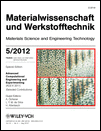
MATERIALWISSENSCHAFT UND WERKSTOFFTECHNIK
Transforming Ideas into Material Solutions.MATERIALWISSENSCHAFT UND WERKSTOFFTECHNIK, published by WILEY-V C H VERLAG GMBH, is a prominent journal dedicated to the field of materials science and engineering. With its ISSN 0933-5137 and E-ISSN 1521-4052, this journal serves as a vital resource for researchers and professionals engaged in exploring the intricate relationships between the properties of materials and their applications. Established in 1970 and continuing through 2024, the journal has been consistently recognized in various categories, achieving a Q3 ranking in 2023 across Condensed Matter Physics, Materials Science (miscellaneous), Mechanical Engineering, and Mechanics of Materials. Although it does not offer open access, its high-quality peer-reviewed content is fundamental to the advancement of knowledge within its three key areas: novel material development, material characterization, and application of materials in engineering contexts. As a driving force in the scientific community, MATERIALWISSENSCHAFT UND WERKSTOFFTECHNIK continues to cater to the curiosity of aspiring students, seasoned professionals, and researchers alike, facilitating a deeper understanding of the complexities of material technology.

RARE METAL MATERIALS AND ENGINEERING
Transforming Ideas into Engineering SolutionsRARE METAL MATERIALS AND ENGINEERING is a vital academic journal dedicated to advancing the fields of materials science, engineering, and metallurgy. Published by the NORTHWEST INST NONFERROUS METAL RESEARCH in China, this journal has been an essential resource for researchers and professionals since its inception in 1993. With a focus on rare metals and their engineering applications, the journal addresses contemporary issues and innovations in materials chemistry and electronic engineering, providing insights into the properties and uses of advanced materials. Although it currently falls within the Q4 category for several categories, including Electrical and Electronic Engineering and Materials Chemistry, its commitment to quality and relevance in the field is evident. The journal offers a platform for researchers to share their findings with the scientific community, fostering collaboration and knowledge exchange in an important area of study. Researchers and students interested in exploring the latest in rare metal technologies and engineering methodologies will find this journal a valuable addition to their academic library.

Metallurgical Research & Technology
Exploring the forefront of materials science and engineering.Metallurgical Research & Technology is a distinguished journal published by EDP SCIENCES S A based in France, focusing on the dynamic field of metallurgical science and engineering. With a strong emphasis on the latest advancements in Materials Chemistry, Computational Mechanics, and Mechanics of Materials, this journal aims to provide a platform for researchers to share innovative findings that propel the field forward. As of 2023, it has secured a commendable position in various categories, including Q3 rankings in Computational Mechanics, Materials Chemistry, and Mechanics of Materials, along with a Q2 ranking in Metals and Alloys. The journal actively promotes open access, facilitating broader dissemination of critical research across the globe. Researchers, professionals, and students in the metallurgical domain will find Metallurgical Research & Technology an invaluable resource for cutting-edge developments and collaborative opportunities.
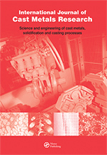
INTERNATIONAL JOURNAL OF CAST METALS RESEARCH
Transforming Challenges into Solutions in Metal ResearchInternational Journal of Cast Metals Research, published by Taylor & Francis Ltd, serves as a premier platform for the dissemination of cutting-edge research in the fields of Mechanical Engineering, Mechanics of Materials, and Metals and Alloys. With a commitment to advancing the understanding of cast metals, this peer-reviewed journal has achieved notable recognition, featuring a 2023 Q2 ranking in its respective categories and ranking 71st in the Materials Science field according to Scopus. Researchers and professionals will find a wealth of valuable insights through rigorous studies and innovative findings, reflecting the journal's goal of facilitating knowledge transfer and addressing contemporary challenges in material science. Furthermore, its accessible publication years from 1996 to 2024 ensure that it not only captures the evolution of technology in cast metals but also stands at the forefront of future developments. Ideal for academics and practitioners alike, the journal aims to foster collaboration and inspire new developments within the discipline.

METALS AND MATERIALS INTERNATIONAL
Unveiling the potential of metals and materials for tomorrow's technologies.METALS AND MATERIALS INTERNATIONAL, published by the Korean Institute of Metals and Materials, is a prestigious journal dedicated to the advancement of research in the fields of materials science and engineering. With an ISSN of 1598-9623 and a robust e-ISSN of 2005-4149, this journal has established itself as a crucial platform for disseminating innovative findings and key advancements that span condensed matter physics, materials chemistry, mechanics of materials, and the technology of metals and alloys. Its Q1 rankings in multiple categories attest to its high impact and relevance in the academic community, placing it among the top journals in its fields with Scopus rankings that reflect a strong international footprint. Here, researchers, professionals, and students can access cutting-edge research and insights, fostering collaboration and exploration of new materials and their applications. With a commitment to excellence and a convergence of knowledge from 1996 to 2024, METALS AND MATERIALS INTERNATIONAL continues to enhance our understanding of materials and their transformative impact on technology and engineering.
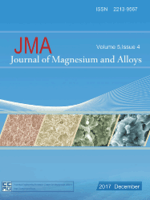
Journal of Magnesium and Alloys
Fostering Collaboration in Cutting-edge Materials ResearchThe Journal of Magnesium and Alloys is a prestigious, peer-reviewed academic publication dedicated to advancing the field of materials science, particularly focusing on magnesium and its alloys. Published by KEAI PUBLISHING LTD since 2013, this Open Access journal enables unrestricted dissemination of research findings, enhancing global collaboration among researchers, professionals, and students. With an ISSN of 2213-9567 and a significant impact factor, it has established itself in the upper quartiles (Q1) of both the Mechanics of Materials and Metals and Alloys categories, ranking #3 out of 176 and #9 out of 398 respectively according to Scopus. The journal aims to provide a forum for the latest advances in the understanding, production, and application of magnesium alloys, fostering innovation and sustainable practices within the materials engineering community. Based in Beijing, China, the journal is committed to bridging gaps in current knowledge and driving future research directions through its high-quality publications.
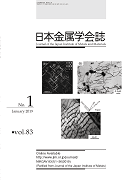
Journal of the Japan Institute of Metals and Materials
Cultivating a deeper understanding of materials technology.Journal of the Japan Institute of Metals and Materials (ISSN: 0021-4876, E-ISSN: 1880-6880) serves as a vital academic platform under the esteemed auspices of the Japan Institute of Metals & Materials. This journal, with a rich publication history dating back to 1937, focuses on advancing knowledge in the fields of metallurgy, materials science, and engineering, making it an important resource for researchers, professionals, and students alike. Although the journal has been categorized in Q4 quartiles across several subject areas, including Condensed Matter Physics and Materials Chemistry, it plays a critical role in disseminating essential findings and fostering discussion regarding innovations in metal and materials research. Notably, the journal operates without open access, which encourages targeted readership engagement through its curated content. Based in Japan, it continues to contribute significantly to the academic community by bridging the gap between scientific inquiry and practical application in materials technology.
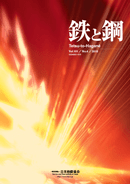
TETSU TO HAGANE-JOURNAL OF THE IRON AND STEEL INSTITUTE OF JAPAN
Pioneering Research in Iron and Steel InnovationTETSU TO HAGANE - JOURNAL OF THE IRON AND STEEL INSTITUTE OF JAPAN is a prominent journal that publishes cutting-edge research in the fields of metallurgy, materials science, and condensed matter physics. Since its inception, this esteemed publication has served as a vital resource for professionals and researchers interested in the advancements in iron and steel technology. Published by the Iron Steel Institute of Japan, this journal has embraced an Open Access model since 2020, facilitating broad dissemination of knowledge to a global audience. The journal showcases significant contributions to materials chemistry and alloys, while consistently ranking in the Q3 and Q4 quartiles across various fields, reflecting its commitment to maintaining rigorous academic standards. Located in the heart of Tokyo, this journal not only highlights research developments in Japan but also fosters international collaboration, making it an indispensable asset for anyone engaged in the study and application of iron and steel.
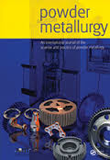
POWDER METALLURGY
Shaping the Future of Ceramics and CompositesPOWDER METALLURGY, with ISSN 0032-5899 and E-ISSN 1743-2901, is a prestigious journal published by SAGE Publications Inc, located in the United Kingdom. Founded in 1958, the journal has been a pivotal platform for the dissemination of innovative research and advancements in the fields of ceramics and composites, condensed matter physics, materials chemistry, and the mechanics of materials. With a commendable impact factor and consistently ranked in the second quartile across multiple categories, POWDER METALLURGY is recognized for its rigorous peer-review process and high-quality articles. The journal is an essential resource for researchers, professionals, and students seeking the latest insights and developments in powder metallurgy and allied materials science disciplines. While it does not offer open access options, readers can access a wealth of information that underscores the journal's commitment to serving as a foundational reference in the progressing landscape of materials science and engineering.

Acta Metallurgica Slovaca
Connecting academia and industry through cutting-edge findings.Acta Metallurgica Slovaca is a distinguished open-access journal published by SCICELL SRO that has been pivotal in the field of Materials Science and Metallurgy since its inception. With a robust commitment to disseminating high-quality research, this journal covers a wide array of topics within the scope of metals and alloys. Now indexed in Scopus, it ranks 82nd out of 176 in its category, reflecting a growing influence within the scientific community. With a quartile ranking of Q3 as of 2023, Acta Metallurgica Slovaca serves as an essential platform for researchers and professionals seeking to share innovative findings and developments in metallurgical science. Open access since 2013, it ensures that research is accessible to all, fostering collaboration and engagement across academia and industry worldwide. With a converged publication timeline extending from 2009 to 2024, this journal continues to play a crucial role in advancing knowledge and addressing contemporary challenges in the metallurgy sector.